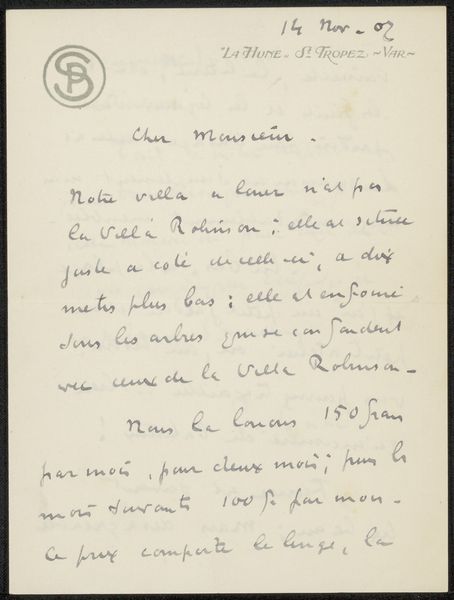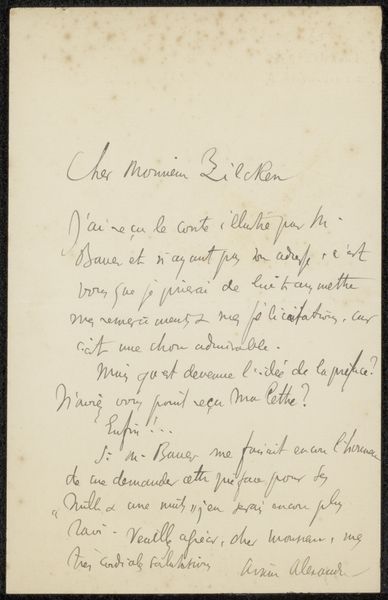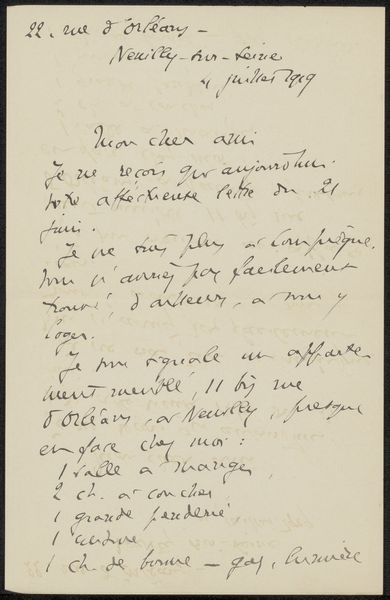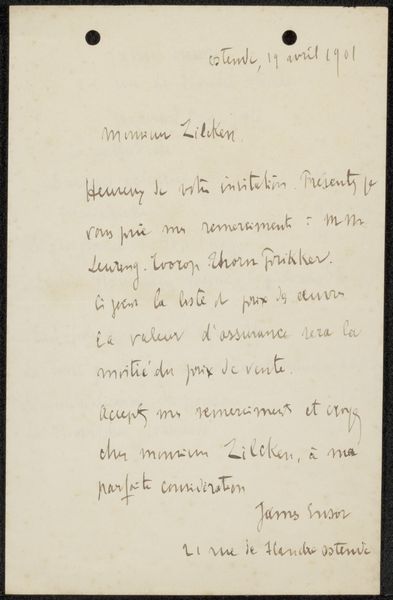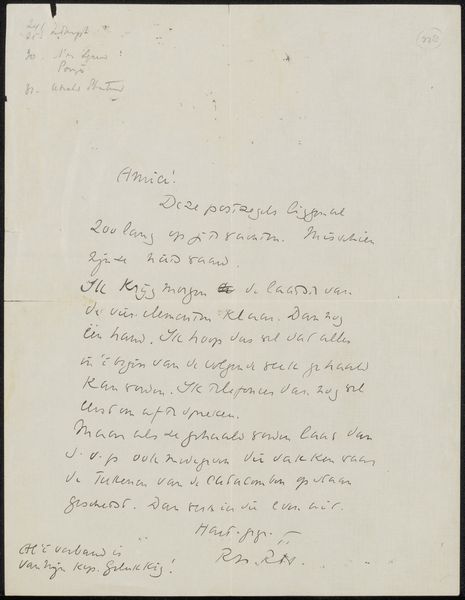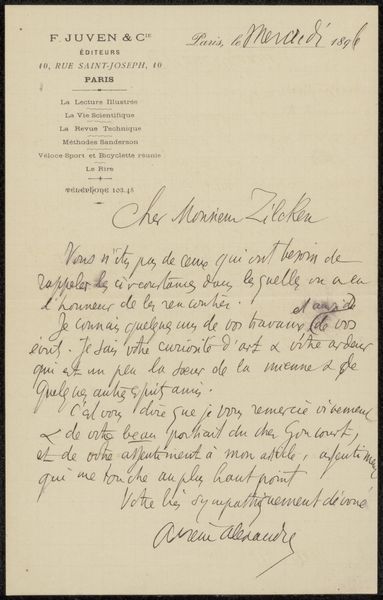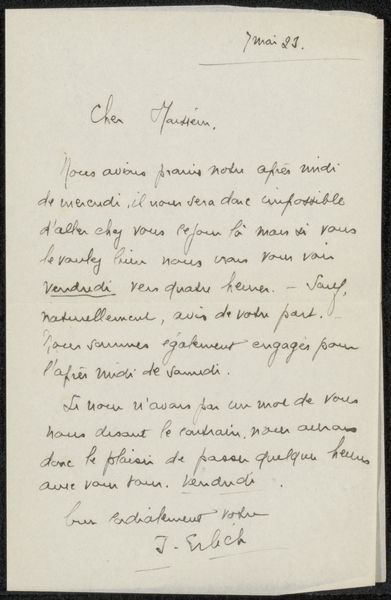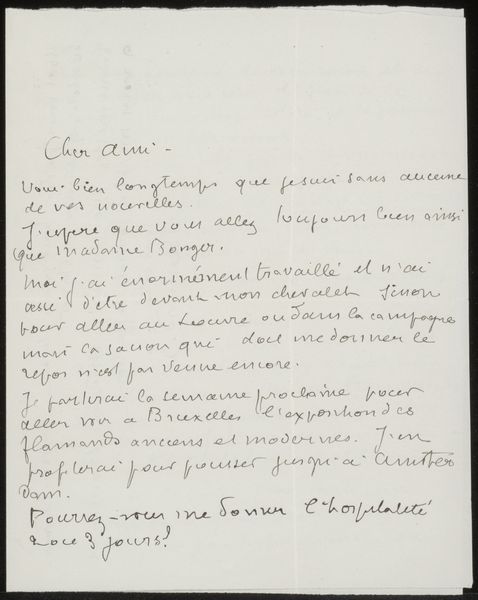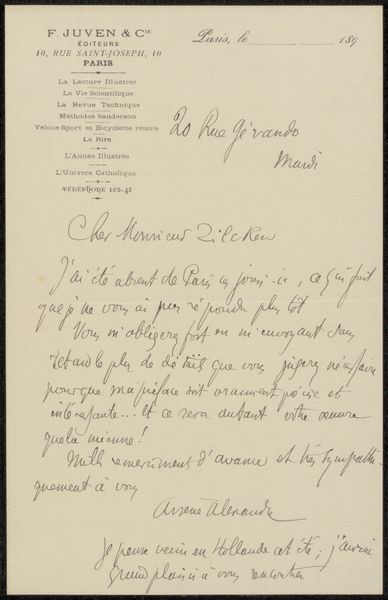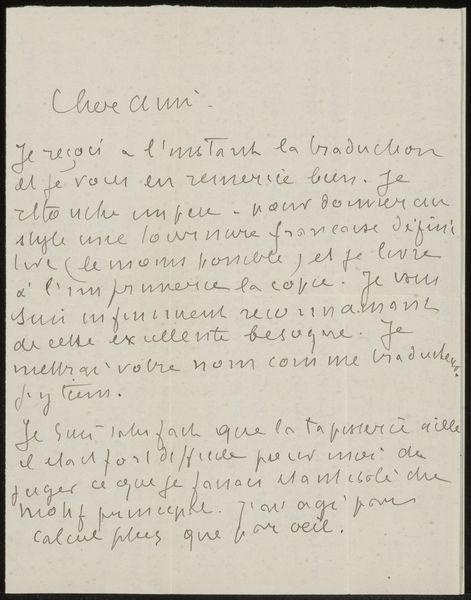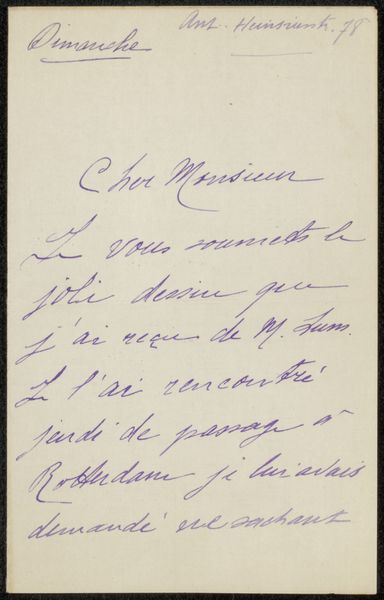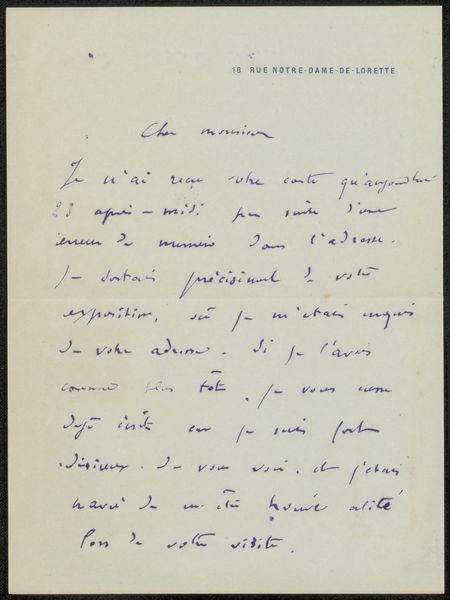
drawing, paper, ink
#
drawing
#
hand written
#
script typography
#
hand-lettering
#
hand drawn type
#
hand lettering
#
paper
#
ink
#
hand-written
#
hand-drawn typeface
#
intimism
#
stylized text
#
thick font
#
handwritten font
#
calligraphy
Copyright: Rijks Museum: Open Domain
Editor: Here we have "Brief aan Philip Zilcken," possibly from 1897, created with ink on paper. It strikes me as a very personal artifact. Seeing someone’s actual handwriting, penned over a century ago, creates an immediate sense of intimacy. What aspects of this piece stand out to you? Curator: Indeed. This "Brief" offers a glimpse into the artistic networks of the late 19th century. Letters were vital for communication and career advancement, particularly within artistic circles. Notice the letterhead; F. Juven & Cie, publishers, implying this was formal correspondence, likely seeking Zilcken's contribution to one of their periodicals. The handwritten script signals intimacy, yet it's carefully rendered, almost calligraphic. This tension between personal expression and professional exchange reveals a lot about the art world's social fabric. Editor: So the publishing house letterhead is essential for the context? Curator: Absolutely. It indicates that this letter isn’t merely a personal note but part of a broader network connecting artists, publishers, and the public. Think about the role publications played in shaping artistic reputations and influencing public taste. Someone like Zilcken’s association with them would solidify his position within the art world. Who he was, where he exhibited, and whom he associated with, impacted his critical and commercial success. Does that add to your reading? Editor: Definitely. I initially saw only personal expression, but I now appreciate the institutional context at play here, and that impacts my reading. It's less like peering into a private moment and more about a calculated act of communication inside of a public role. Curator: Precisely. And recognizing this interaction helps us understand the politics of imagery and public role of the art in society at the time. This letter illuminates how artists negotiated the complexities of their profession within a structured system. Editor: Fascinating. I never considered the degree to which something as simple as handwriting could reveal such social dynamics. Curator: Examining the cultural and institutional context helps us recognize an individual as participating within established and evolving socio-political structures.
Comments
No comments
Be the first to comment and join the conversation on the ultimate creative platform.
